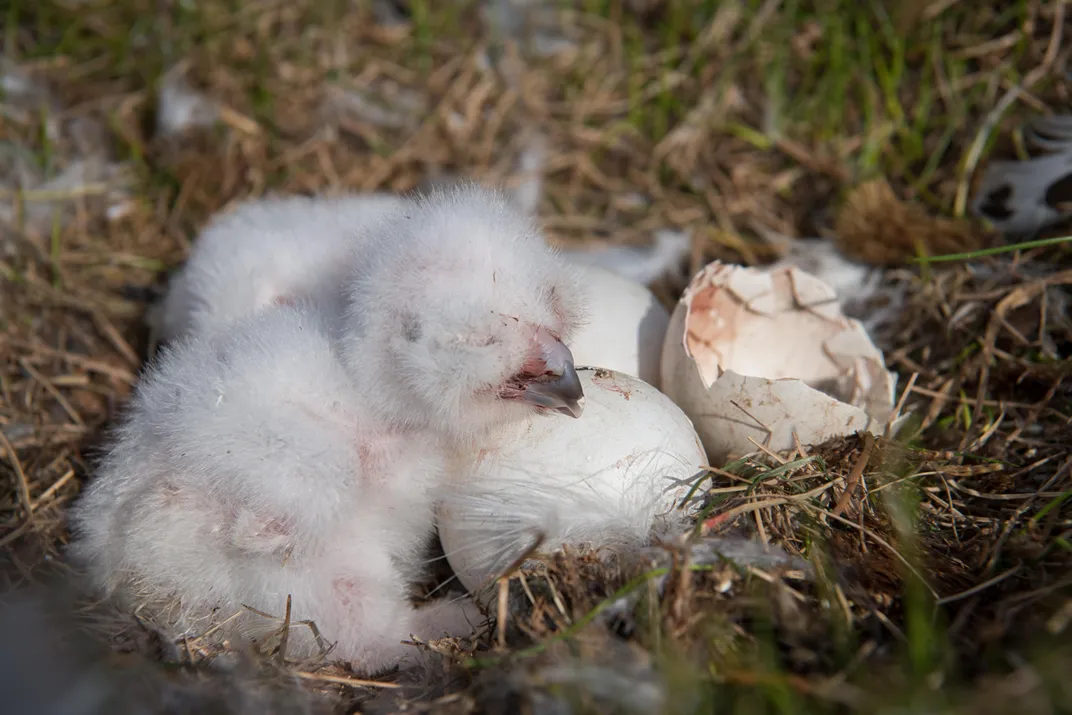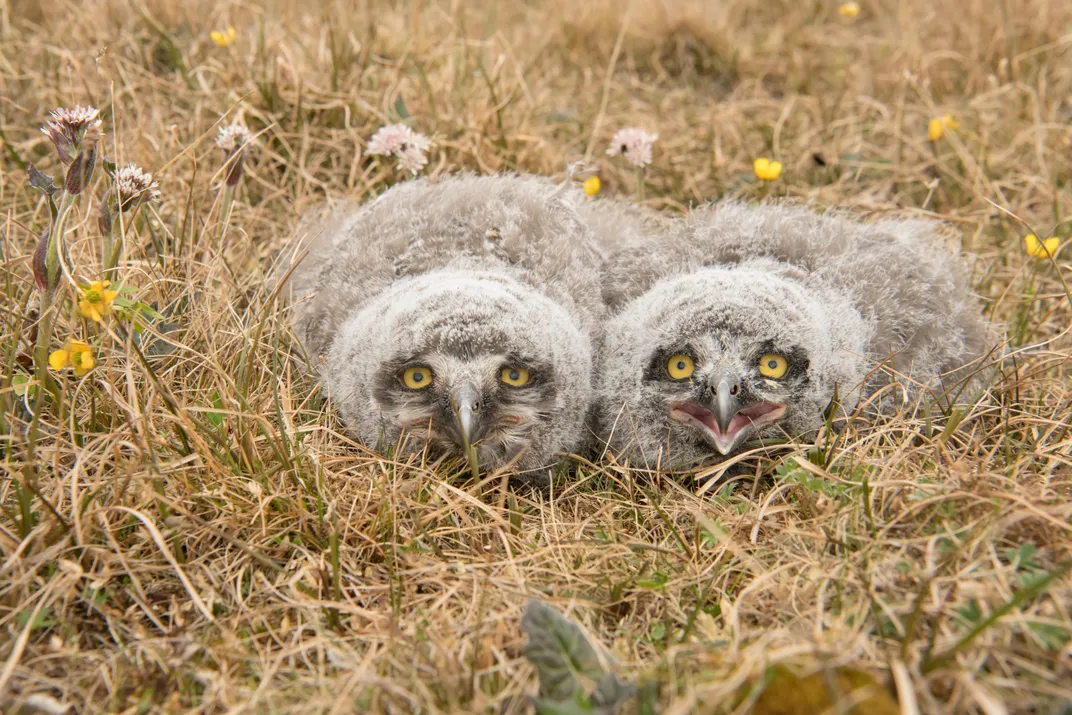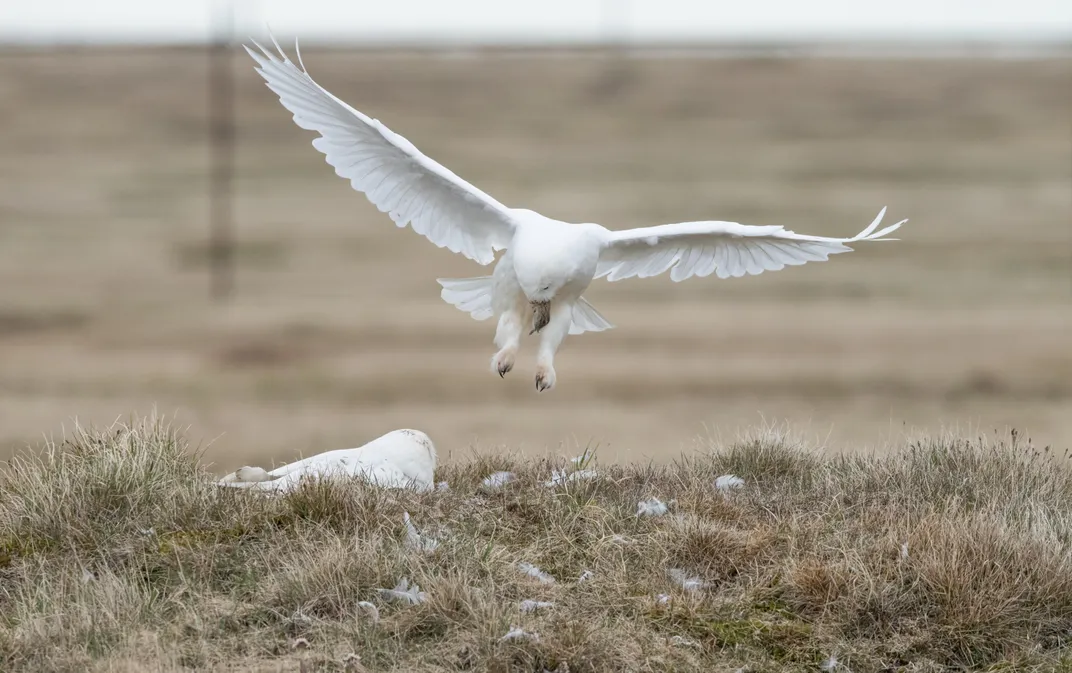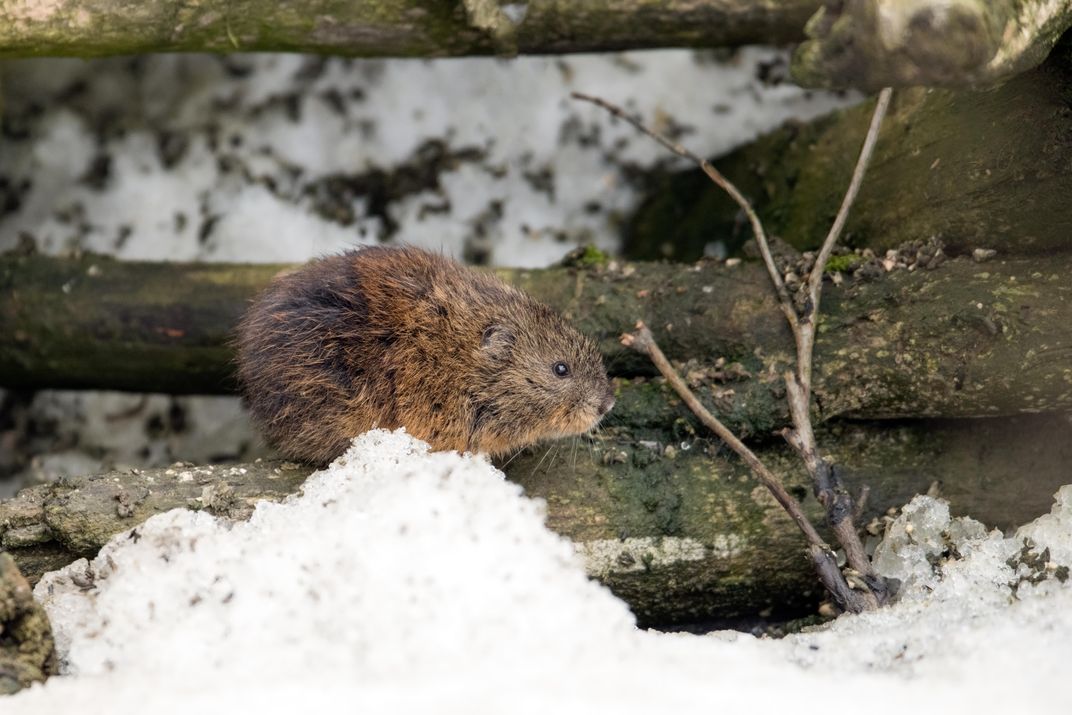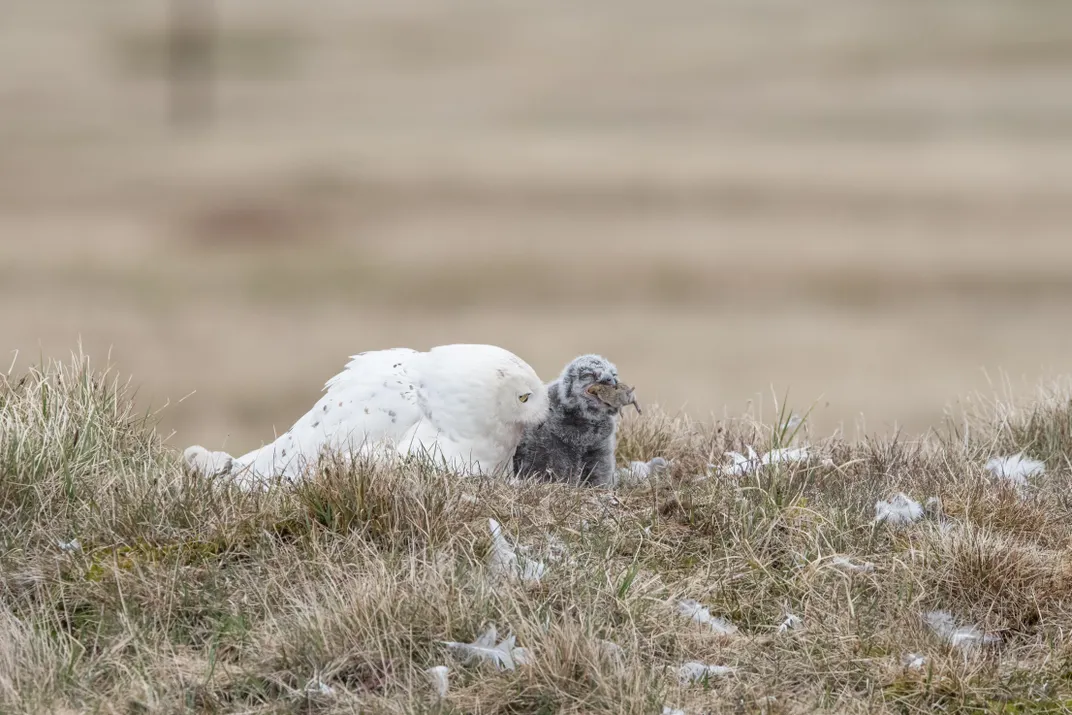Why Is the Snowy Owl Disappearing?
These birds, once a feature of the far north as reliable as ice, are becoming less and less common
/https://tf-cmsv2-smithsonianmag-media.s3.amazonaws.com/filer/d7/e0/d7e09850-8c9c-4789-8517-7f9292f2b17b/oct018_i09_snowyowls.jpg)
A white glow against the brown summer tundra caught my eye. Through binoculars, I could see it was a male snowy owl. His body was covered in thick, white down, offset by a black beak, black talons and a few black dots on his feathers. His head swiveled from side to side as his forward-facing yellow eyes watched for any rustling of prey.
The snowy owl, like the polar bear, holds a special place in human imagination, from ancient morality tales told around Arctic fires to Hedwig from the wizarding world of Harry Potter. These northern wanderers can be found in Canada, Scandinavia, Russia, Iceland and the British Isles—occasionally even making it as far south as Hawaii. They can fly back and forth across continents. One female owl tracked in 2012 traveled 7,000 miles round-trip from Boston to Nunavut. In a phenomenon known as an irruption, large numbers of snowy owls sometimes emerge from their nests in a given season and make it down to the suburbs of U.S. cities like Seattle and Boston—even as far south as Texas.
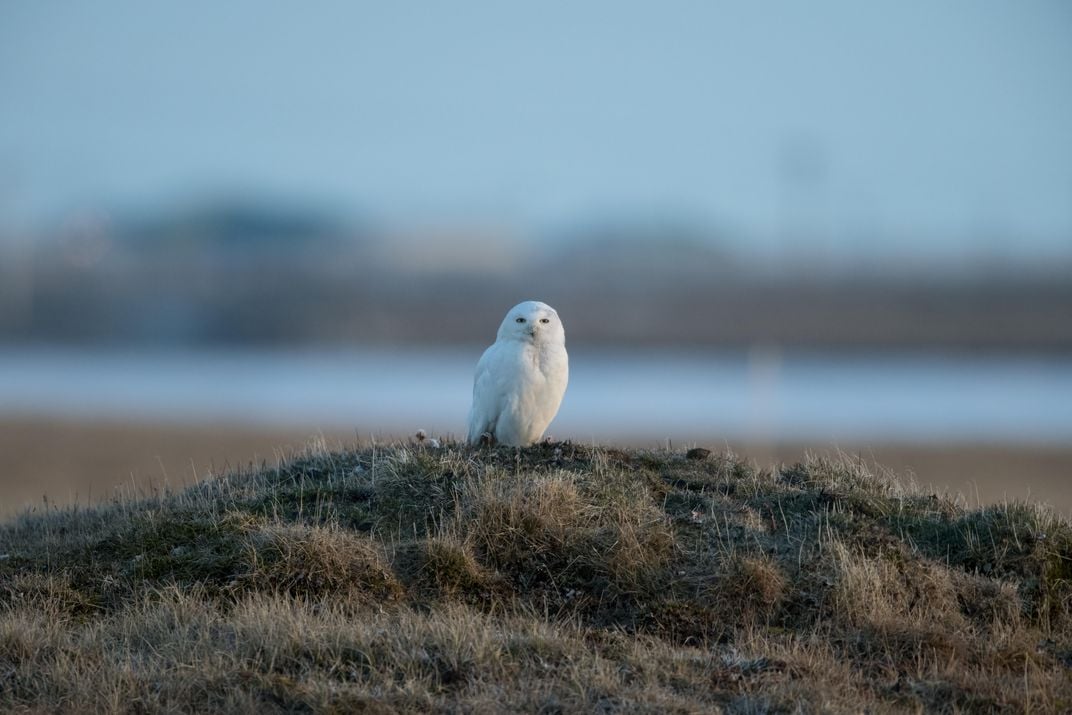
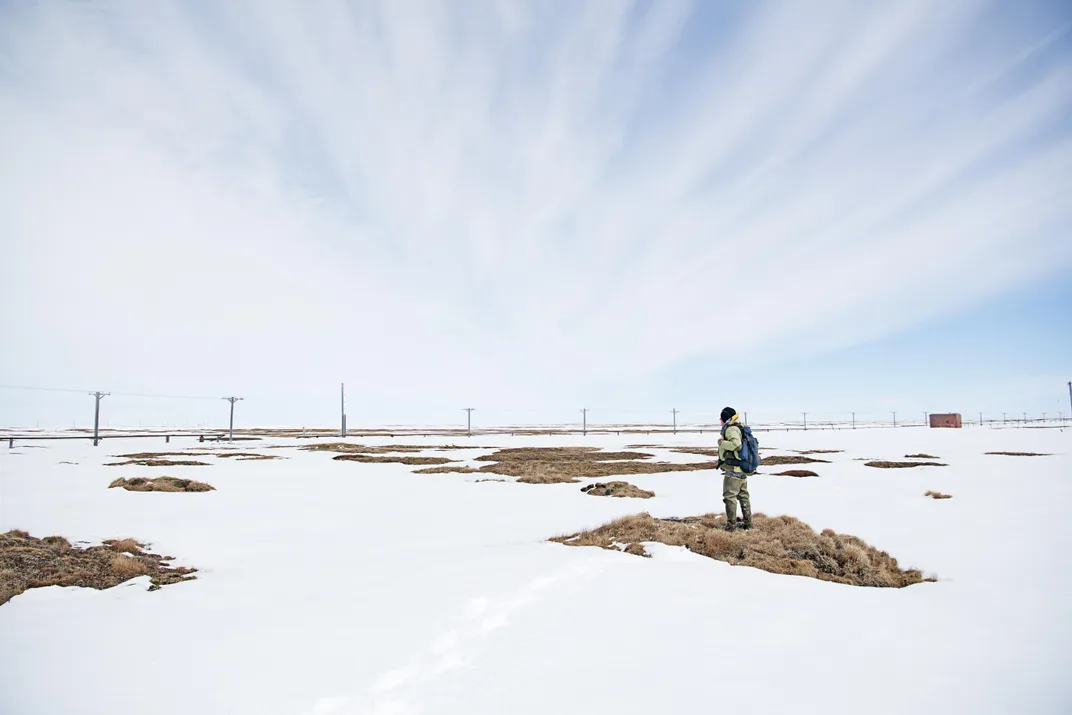
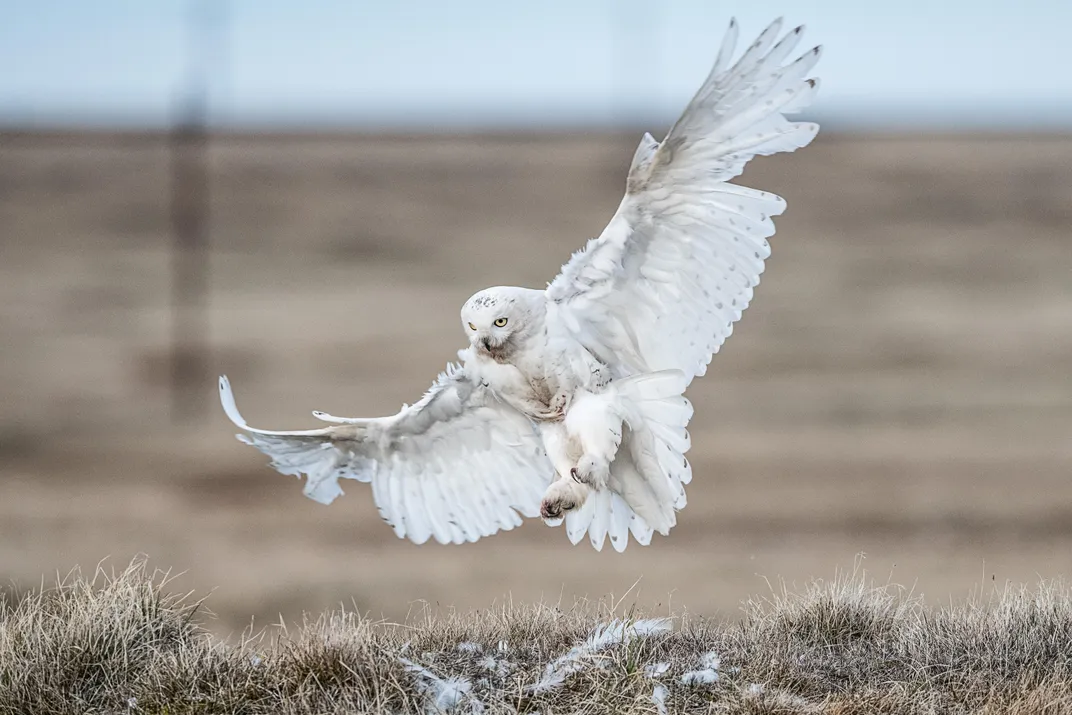
Like ice, these longtime icons of the Far North are becoming less and less common. In the most recent Red List of Threatened Species, published last December, the International Union for Conservation of Nature (IUCN) listed the snowy owl’s status, for the first time, as “vulnerable,” after research showed that the adult population had decreased to 28,000, down from 200,000 in 2013. The IUCN cautioned that if the rate of decline “proves to be even higher, the species may be eligible for further uplisting to ‘endangered.’”
Denver Holt, the founder and president of the nonprofit Owl Research Institute (ORI) and one of the nation’s pre-eminent owl biologists, has long been documenting these signs of trouble. For more than two decades, he’s been traveling to Utqiagvik (formerly Barrow), Alaska, the northernmost town in the United States and one of the snowy owl’s top breeding grounds. In 1995, Holt counted 54 snowy owl nests. In 2006, there were 38. This year, he found only seven, and three of those nests failed.
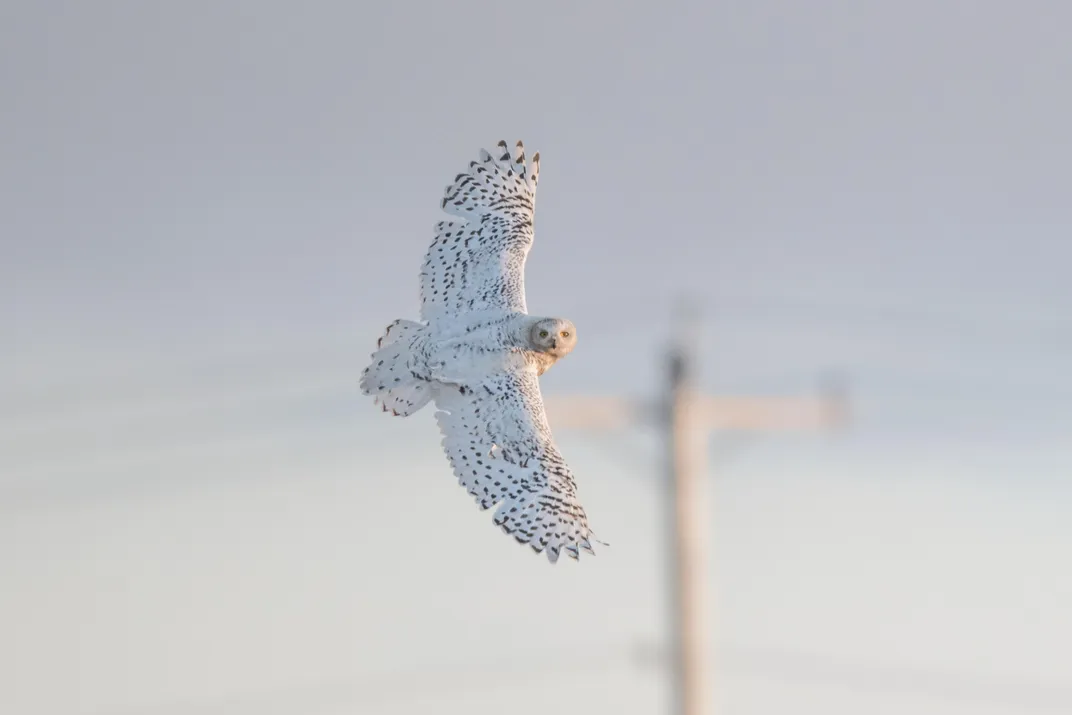
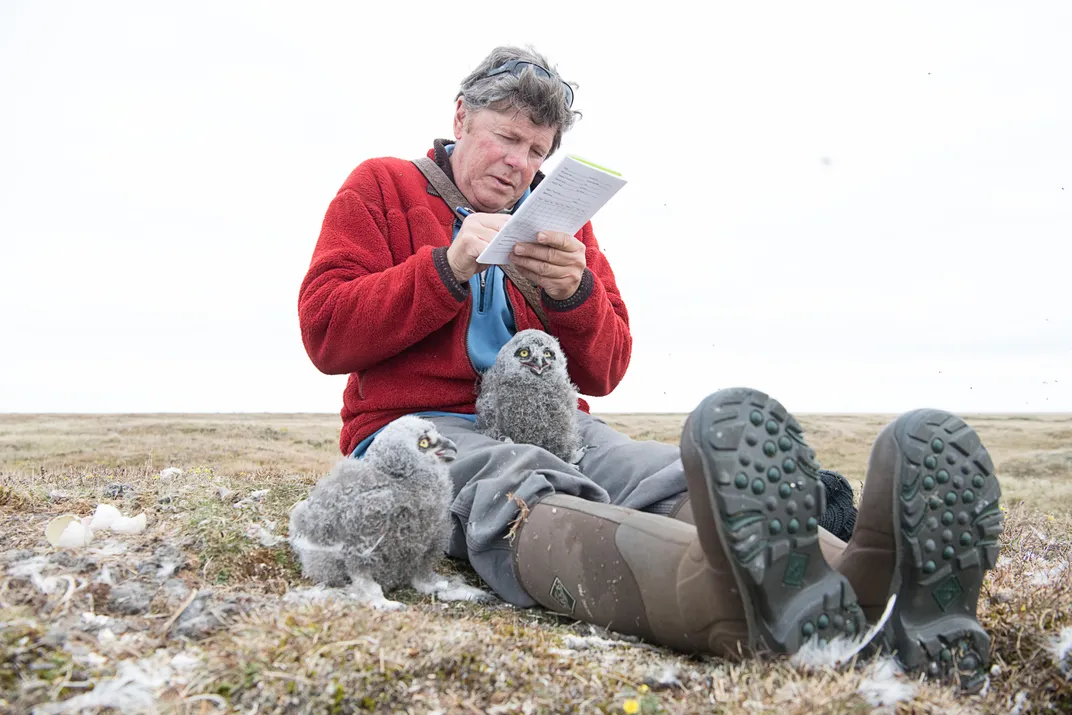
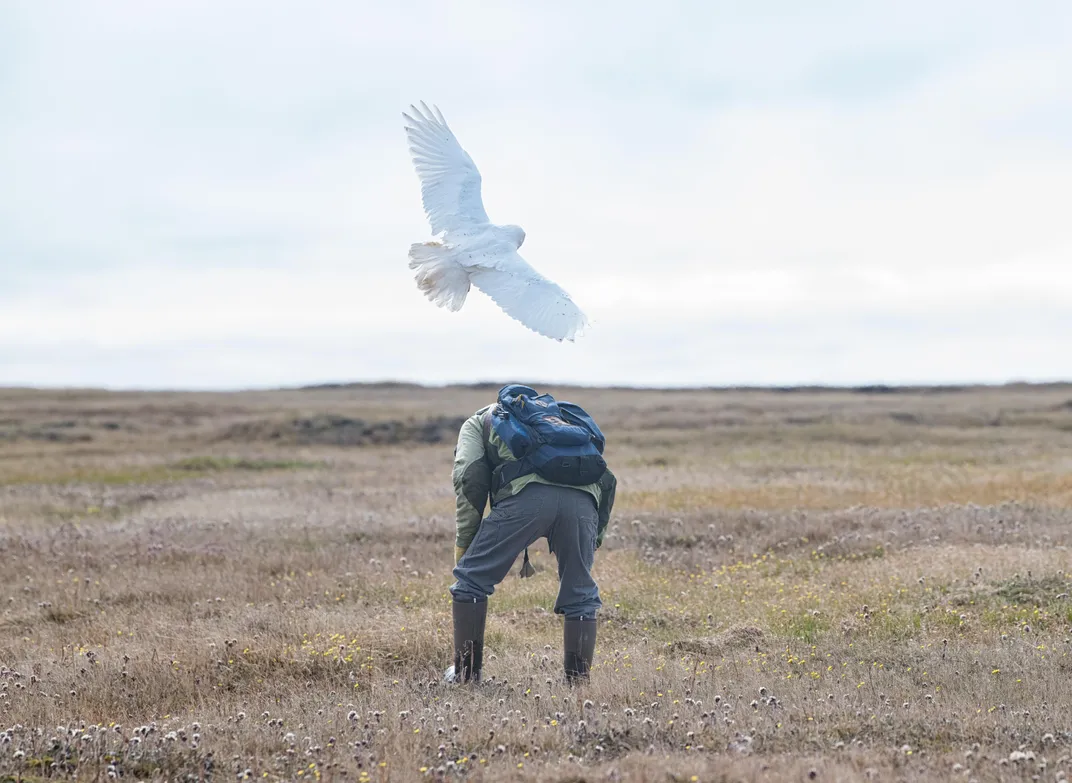
Owls do not build nests like other birds do. Instead, a female snowy—larger and darker than her male counterpart—scratches out a shallow bowl in the earth, usually atop a small hill. Watching for predators, she lays one egg about every two days. Altogether, she may lay around a dozen, depending on food availability. “Brown lemmings are the bottom line for snowy owls here,” says Holt. Males bring home the lemmings, and females stack them around the nesting site in caches as large as 10 or 15.
Though snowy owls will eat voles, arctic hares and smaller birds, a study by the Owl Research Institute showed that out of 43,000 prey animals collected at snowy owl breeding sites, 90 percent were lemmings. These small, mouselike rodents stay active all winter long, eating moss when there are no green leaves available. Everything has to be just right for them to flourish. Too much snowmelt too early in the season and the lemmings are forced to spend more time aboveground, making them susceptible to every predator in the area. Too little snowmelt and there isn’t enough vegetation for the lemmings to eat. (One risk lemmings don’t face is suicidally following each other off cliffs. That myth comes from a 1958 Disney documentary, White Wilderness, in which filmmakers herded a group of lemmings off a cliff to create a dramatic scene.) Snowy owls need as much as a pound of prey every day to survive the harsh arctic conditions, and catching lemmings is more efficient than hunting seabirds.
Lemming numbers are thought to go through three- to four-year boom and bust cycles. Some scientists believe snowy owls and other predators—such as stoats and foxes—drive these trends. When lemmings are plentiful, the creatures who eat them flourish. When lemmings disappear, their predators’ numbers also shrink, allowing lemming numbers to climb. Once there are more lemmings on the ground again, snowy owl populations rise accordingly.
But Holt doesn’t believe it’s that simple: “It’s a population fluctuation and everything has to be in line for a boom. But it’s not a cycle.” And the overall numbers are clearly trending down. In November 2017, ORI was awarded a grant to determine if climate change is causing the decline. ORI will draw on its own 27 years of snowy owl and lemming data, along with weather data collected by the National Weather Service and the Barrow Observatory.
As Holt hunts for answers, he remains awed by the strangeness of the bird itself. “There is something about that huge white owl, adapted to arctic environments, that lures me,” says Holt. “It’s similar to looking at fresh snow. There’s something special, unusual or magical. I just enjoy seeing them, and it may not be tangible.”
